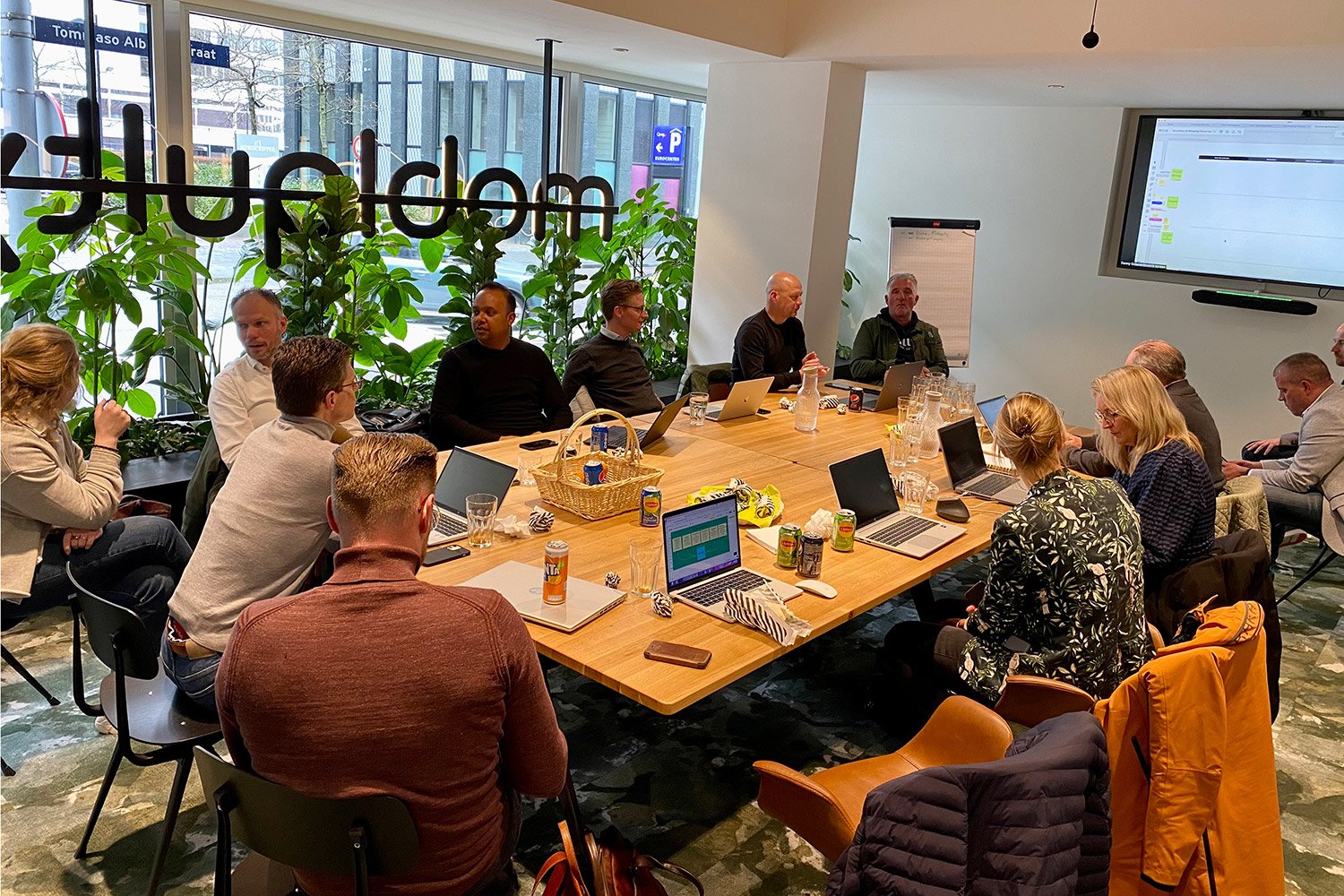On Thursday 31/03 the first expert session from the Shopping Tomorrow group regarding The Boundless Store was hosted at the Mobiquity EMEA HQ in Amsterdam.
In this first session the group has focused on 3 items:
1. Defining the scope and the definition of the Boundless Store
2. Context mapping of the trends around The Boundless Store
3. Friction mapping on the actual shopper journeys
Scope and definition of the Boundless Store
To make sure that everyone in the expert group has the same understanding of the definition we did a round of validation. The main outcome is that a Boundless Store focusses on 3 main elements of the shopper journey as a basic requirement. It is a store where: a shopper is automatically being recognised when entering the store and where this recognising part is the core focus during the complete shopper journey. It is a store where: products that are being picked from the shelf by shopper are automatically being recognised and added to a virtual basket on personalised shopper level. It is also a store where: it is possible to complete the entire shopper journey without the need of any physical handling during payment and check-out when leaving the store. However, it is also a store that is equipped with smart store tech allowing more tailored inspiration in the store and opening up unlocked opportunities to provide product information.
Context mapping of the trends
During a context mapping exercise, we looked at the external trends around e.g. regulations, demographics, economy & environment and uncertainties in the current market place. We added the lens of tech trends, competition and customer needs to this.
Friction mapping on the actual shopper journeys
Knowing the customer needs is one thing but understanding the frictions they currently experience is almost as important. Where the current pace in the market of boundless stores is being made by Food retail, we as an expert group have a brother focus. We classified the shopper journey steps as: before store – check—in – during trip – payment / checkout – after store. Per step we have focused on the friction points from a shopper perspective combining this with the retail segments: Food Retail, Fashion, Non-Food low and high involvement.
During the next session we will continue this friction mapping exercise but then looking at it from retailer and manufacturer perspective.

Mobiquity & AWS, ShoppingTomorrow expert group, chaired by Danny Groenenboom, Strategy Director Retail Europe at Mobiquity EMEA & APAC and hosted by Marcel Visser, Enterprise Retail Advisor at Amazon Web Services.
This expert group will work on exploring, online and offline: What is the best way to design and implement a Smart Tech Store?
Looking into what frictions, per stakeholder, there are in the Netherlands in order to establish the best Smart Tech Store. The conclusions that emerge will serve as a handle to get started quickly and well prepared in the short term. We will, among other things, look at the possibilities of existing technology as it is already used behind seamless shopping formulas such as Amazon Go and Amazon Fresh. In addition to focusing on adjacent use cases such as food waste reduction and sustainability, we also dive into the new potential that 'The Boundless Store' delivers in terms of data, with the idea that retailers finally know just as much offline as online about shopper behaviour.
What is covered during the study?
The sub-questions below will provide a complete backlog of all the actions needed to start introducing a 'Boundless Store' in your retail organisation tomorrow:
* * *
Curious to learn more?
Leave your details below and we'll be in touch soon.
